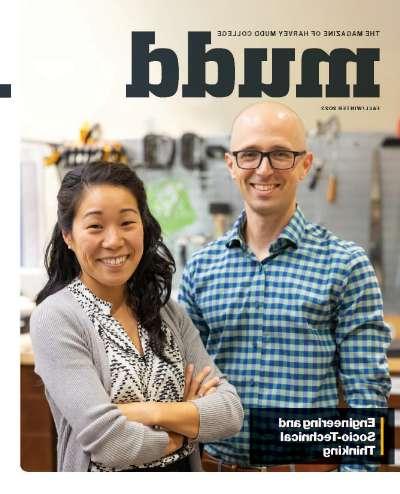New CS/Climate Course is a Winner
February 20, 2024
Students in Harvey Mudd College’s new Games for Climate Change Literacy course learn how to communicate climate change research via a widely beloved tool: analog games. Using human-computer interaction methodologies and behavioral theories, the students design non-digital climate change literacy games to inspire positive behavior change in players. The course specifically investigates the role of games in influencing climate change attitudes and building literacy.
Lynn Kirabo, Maria M. Klawe Assistant Professor of Climate and CS in the Hixon Center for Climate and the Environment, developed the course, which she’s teaching for the first time this semester.
“Students design games that are grounded in climate change literature or scenarios to guide student rationale and arguments about different game design decisions or mechanics,” she says.
This semester, students will design one gift game for a classmate—an individual project designed to allow students to learn and use different game design tools. Students design the gift games based on their classmates’ attitudes toward climate change. In other projects, they’ll design games in teams. Students will be assigned a specific domain (energy, food, transportation, etc.) and behavioral theory to guide their game design choices for each project.
“My game was designed as a gift for a classmate who was semi-hopeful about climate action but skeptical that our actions matter,” says Connor Seto ’24. “I created We The People as a trivia game which teaches players about past collective organizing movements which had spurred meaningful climate action.”
Natalie Burton SCR ’24 designed a game called Extract from the Frog Stack, inspired by their gift game partner’s interest in ecology and the idea of how individual choice impacts someone’s contribution to climate change. “You play as an ambitious entrepreneur and scientist who has developed an elixir of youth, synthesized entirely from materials found in a nearby swamp,” they say. “This swamp is the only known habitat for the Rana temporaria iuvenale, a frog-like creature whose pheromones have transformed the ordinary dirt, plants and animals of this swamp into youth-granting substances. To increase your profits, your goal is to extract as many resource items from the swamp as possible. But be careful! If the frog dies, you will lose everything.”
“By the end of the class,” Kirabo says, “students will have had the opportunity to design game artifacts that inspire positive change, collaborate with others who may or may not hold the same view towards climate change, decompose a climate change literacy problem from a game design perspective, learn about rapid prototyping, playtest and iterate on their game ideas and, hopefully, enjoy the entire process.”
Games for Climate Change Literacy is part of the Hixon Center for Climate and the Environment’s Climate Interventions focus area, one of four (the other three areas are Climate Dynamics, Climate Impacts and Climate Contexts). The course is offered to students in climate-focused joint majors (the first of which is Chemistry and Climate; more joint majors are being developed). There will also be seats available to students across the 5Cs who are not in climate-focused joint majors but are interested in leveraging transformational games.
Seto’s experience so far has been positive and perhaps even transformative. “One memorable moment from this class,” he says, “was that when play testing this game, I learned that one of my classmates is an activist mentioned in one of my trivia questions. It was a really cool reminder that progress is won by everyday people organizing for change.”
